10x Tips for sustainable packaging and shipment
How to pack & send a package sustainably?
updated on 24 February 2021 | Authors: Brent Nijssen & Pim Brouwer
More and more entrepreneurs are looking for examples and solutions to make shipments of products more sustainable. According to research from Trivium packaging (2020), they are right to do so because 59% of consumers are less likely to buy a product that gets delivered in packaging that is damaging to the environment. Moreover, 74% of consumers are willing to pay a premium for sustainable packaging.
In this article, we give ten tips about sustainable packaging materials. We also provide inspiration for the sustainable distribution of packages to the customer, with the goal to improve circular usage of packaging and increase the added value of sustainable materials.
“By sending parcels efficiently and paying attention to the packaging material, you can easily and quickly achieve ecological, economic and marketing benefits.” – Brent Nijssen
10 Examples: Sustainable Packaging Tips at a glance:
- Reuse Residual flows into Packaging material
- Use mono packaging
- Keep the shipping package compact
- Choose recycled and sustainable packaging
- Choose paper with an FSC® or PEFC ™ quality mark
- Send resealable packaging
- Green Shipping – Sustainable ordering and shipping
- Inform the recipient about waste separation
- Do not ship a box in a box
- Increase the delivery chance
1. Reuse residual flows into packaging material
Corrugated boxes (OCC) made up 40,5% of Municipal Solid Waste(MSW) in 2018, According to the United States Environmental Protection Agency (EPA), of which around 96,5% got recycled that year. This recycling rate proves that cardboard is the perfect example of a sustainable bio-based raw material.
Old cardboard is an important raw material for making new cardboard. The recycled content makes up 89% of new corrugated packages in Europe and 51% in the U.S., reducing the need for wooden fibers from forestry products (FEFCO, 2018).
But cardboard fibers can’t be used indefinitely. A new fiber can survive seven pulping processes before becoming useless (Video pulping process). Increasing the added value of cardboard between pulping processes by extending the cardboard’s life cycle can make the product more economically beneficial.
Tip: Get more information about cardboard recycling
For example, a cardboard shredder can shred the cardboard into a mat or into chips that act as a protection layer for vulnerable products. Repurposing the cardboard as a filling material before entering the recycling process. This idea lowers the cost of filling material and reduces the CO2 output of organizations.
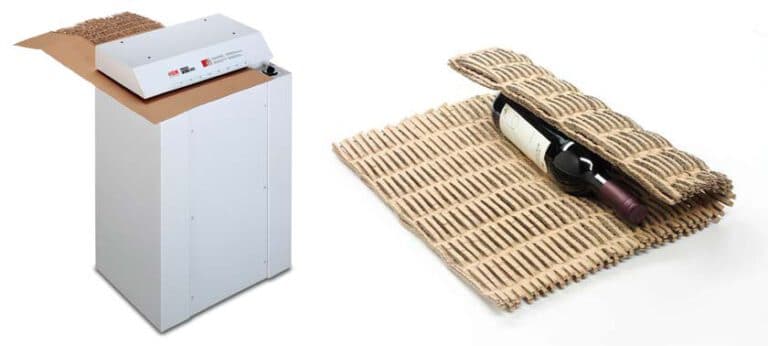
Cardboard shredder
You can purchase shredded cardboard from packaging suppliers, but you can also make the material yourself. For this, you need residual cardboard waste, such as old cardboard boxes or cardboard plates.
Typically, this material gets disposed of weekly or monthly by a waste disposal company. But this material can therefore also be reused as filler or protective material.
“Shredder board is a practical and environmentally friendly material for packaging and shipping products.”
A cardboard shredder is a machine with which you can shred or perforate cardboard sheets. Most shredders create flexible mats from cardboard.
This material is ideal for protecting products during shipment. Use it to wrap products, or use it to fill voids in the packing box. Read all about the benefits of a cardboard shredder.
Do you want more information about cardboard shredders?
2. Use mono packaging
A shipping box’s empty space often gets filled with filling- or buffer material to prevent a product from shifting inside a shipping box. For this, filling chips, bubble wrap, packing peanuts, or air cushions often get used as a filling material. These materials are often made of plastics, but this makes the shipping packaging overall less circular and more susceptible for cross-contamination during the recycling process.
“65% of consumers associate plastics with ocean pollution” – Trivium packaging (2020)
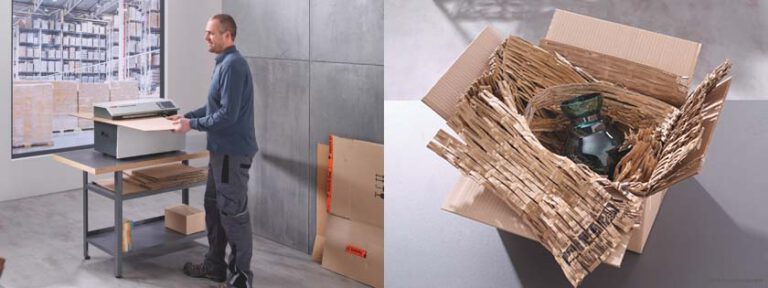
For recycling purposes, it is better to use mono packaging. Mono packaging means that the filling material is the same as the shipping box’s material and therefore consists of one type of material or raw material. For example, the packaging consists of a cardboard box with a filling material of paper or cardboard.
This combination makes it easier for the recipient to separate the packaging, and therefore it gets more manageable for the processor to recycle the material for new packaging purposes.
“Combining different materials makes recycled less pure, and therefore of lower value. We advise packaging a shipment with mono materials to promote the recycling process at the packaging level.” – Gerard Nijssen CEO of Recycling.nl
The same applies to plastic packaging. Make sure the packaging consists of one type of plastic. Many polymers can only be recycled with high quality when the raw materials get separated from each other because each plastic has different properties. And become a low-value brittle product when recycled together.
Example: Mono-material packaging with fixation
Packaging company Smurfit Kappa develops special mono-material packaging, including fixation. What does this mean? Both the box and the filling material consist of one primary material, namely FSC-certified paper. The packaging is intended for the sustainable packaging and safe shipping of products.
Using cardboard inserts or honeycomb cardboard structures as packaging filling creates a package that is protected from impact and prevents product movement during transport.
Because the packaging consists of one natural material, it is 100% recyclable and therefore environmentally friendly. It is a high-quality and cost-efficient replacement for, for example, polystyrene foam, bubble wrap, or other plastic filling or buffer material.
Companies who offer Mono-packaging solutions:
3. Keep the shipping container compact
Filling material is ideal for filling the empty space between the product and the box. But how does this unused space arise in the first place? In most cases, this is because the box is too spacious for the product to be shipped.
Therefore, it is more sensible to keep the shipping box as compact as possible so that the product fits precisely in the box and there is less empty space. The bigger the unused space, the less efficient the distribution becomes. After all, unnecessary air gets transported during transport, which negatively affects the package’s CO2 footprint.
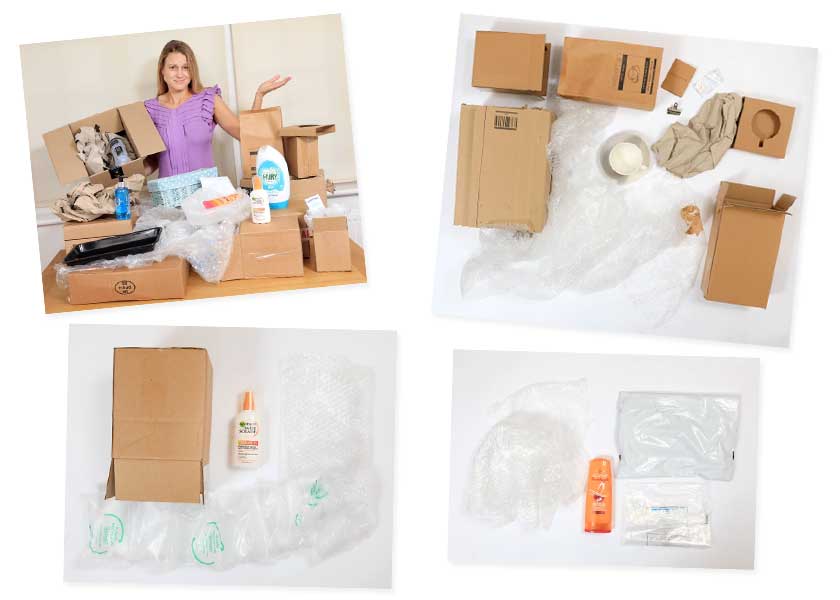
Unnecessarily bulky packaging is one of the biggest annoyances of online shoppers. See more examples of excess packaging from Amazon
Tip: Amazon launched a new category for their partners Compact by design helping customers to find sustainable products with a higher fill-rate.
Find the right balance.
It is important to keep the amount of packaging material for a package as low as possible. But it is not the intention that too little material get used, and there is a chance that the product is not sufficiently protected during the process and can be damaged. In most cases, the recipient will return a damaged product, and these extra transport movements do not contribute to a reduction in the shipment’s CO2 footprint.
![]()
Therefore, find the right balance between the protection of the product and packaging. With a view to sustainability, it is more effective to protect the product well because the environmental pressure increases faster with a moderately protected product because of the damage risks. This is illustrated in the graph above.
Automated right-sizing machines available from these sellers:
4. Choose recycled and sustainable packaging
For cardboard, paper, and plastic packaging, it is always more sustainable if the packaging is (partly) made of recycled material. It is also important that the packaging itself is recyclable to function as a new product after recycling. Another possibility is choosing packaging made of a naturally degradable material (bio-based) that can be composted after usage.
![]()
“Plastic is one of the most polluting materials on the planet. Between 1950 and 2015, only 9% of the world’s plastic was recycled. The rest ended up in landfills and nature, with all its consequences.”
There are all kinds of sustainable packaging options such as:
- Biodegradable filler chips and bubble wrap
- Recyclable cardboard boxes
- Bio-based filling material made from starch, bamboo, seaweed, or elephant grass
“The CO2 emissions from the production of bio-based plastics are 30-70% lower than for the production of plastics based on petroleum.”
Different packaging and fill materials which are biobased:
“47% of consumers won’t buy products in products that are harmful to the environment.” – Trivium packaging (2020)
5. Choose paper with an FSC® or PEFC ™ quality mark
When you use paper or cardboard packaging, it is important to check whether this material has an FSC or PEFC quality mark. These quality marks guarantee that the paper comes from forests that get managed sustainably.
About 85% of newly made cardboard consists of old cardboard, which means that 15% new fiber gets added to the pulp. And this fiber must come from sustainable forests.
![]()
“53% are actively looking for sustainable information on packaging.” – Trivium packaging (2020)
Did you know that?
- In 90% of all consumer market categories, sustainability marketed products to outpace the growth in their category, with an average pace of 5,6x conventionally marked products.
- Sustainability-marketed products enjoy a significant price premium of 39,5% vs. conventionally marketed products.
6. Send resealable packaging
There is a chance that the recipient will return a sent package. For example, the product does not meet expectations or because the product has been damaged during transport.
According to research by Paazl, the percentage of returns in America is estimated at 25%. This means that retailers have to pick up their products and drive them back to the distribution center. this process of moving the goods back and forth has an impact on the environment and the packaging of the product is more likely to cause damage.
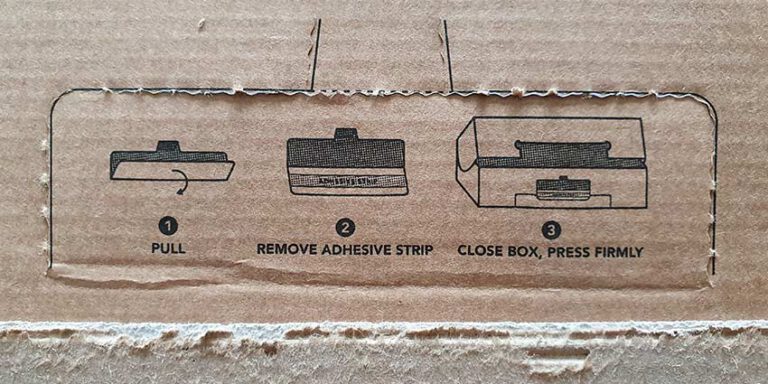
Many online stores offer the option of “free returns,” which lowers the ordering threshold. Due to the ease of return, more orders are being placed, and more returned.
Many retailers make it easy for the recipient to return a product by facilitating return labels and return documents. But packaging is also increasingly being considered. Cardboard boxes, for example, contain visual instructions to open the box without damaging it easily. In the event of a return, the lid can be placed back and glued by using an adhesive strip.
Plastic shipping bags, which get used frequently by the clothing industry, also increasingly contain innovative features to open the bag without tearing it. For example, the bag can have a perforated seam so that the packaging can get opened neatly. In the event of a return shipment, the opened bag can be resealed with an adhesive strip.
‘’Make sure that the e-commerce packaging you select to deliver your products safely and soundly to the customer can easily be used to return the product in case of dissatisfaction. The last thing you want a customer to use is unsuitable return packaging that could lead to a damaged product.’’ VPK GROUP, an international packaging supplier.
The purpose of resealable packaging is to make the return of a shipment efficient for the customer. But resealable packaging also contributes to the sustainability of the return shipment. After all, the customer can reuse the same packaging to return the product. In principle, the customer does not need tape or other packaging materials to return the package safely. As a result, the packaging continues to consist of mono-materials, which benefits the recycling of the material.
7. Green Shipping – Sustainable ordering and shipping
In the U.S., people are used to receiving an (online) order within one or two days. You can basically buy anything you want, when you want, and receive it within 24 hours. And in most cases, the shipping costs are “free.” Some online stores even send parcels to the customer on the same day. This fast shipping service is, of course, unprecedented, but it may have ecological disadvantages.
Priority shipping
Due to this short delivery time, many more transport movements are required, contributing to more CO2 emissions. When a customer orders multiple items from a web store, it is possible that the order is sent in various separate packages and delivered to the customer. For example, the customer has ordered via an online platform on which multiple providers offer products. Or because a specific product is not in stock, and the shipment, therefore, gets sent in parts, not sustainable.
![]()
It would be more environmentally friendly if the customer were more in control during the order and could indicate how much haste was offered for the shipment. Therefore, add a “green-shipping” option in the ordering process that allows the customer to display that the order does not necessarily have to be delivered within a day. For example, the package cannot be sent the fastest, but the most sustainable.
E-commerce stores lag far behind with ‘green delivery’
Green-shipping gives the supplier more time to schedule transport more efficiently and therefore more sustainably. They can do this by lowering the package’s priority in the order planning system, enabling the program to find more optimal transport combinations, leading to fewer transport movements, hence reducing CO2 output per package.
Better transport combinations can result, for example, because the truck or delivery van sends a more optimal load. It’s like playing Tetris, increasing the container’s fill rate.
The green shipped packages can also be packed with less haste, enabling suppliers to focus more on sustainable packaging and bundling of products in 1 box.
“By adding a “green-shipping” option you make the customer more aware of their order.”
Check load optimization software
8. Inform the recipient about waste sorting
“53% are actively looking for sustainable information on packaging.” – Trivium packaging (2020)
A somewhat older study from 2015 found that about 20% of shipping packaging communicates with text, logos, or symbols about how packaging should be separated for optimal recycling.
![]()
Fortunately, more and more packaging is showing information about the correct separation of the packaging. Does your packaging not yet have this? Then it is wise to have a disposable indicator printed on the packaging.
This indicator can be printed, for example, on the cardboard box or the plastic shipping bag in which clothing gets sent. With this information, the packaging can be appropriately disposed of by the customer.
Besides the fact that this disposal guide contributes to a higher recycling percentage of the packaging material, it also contributes to your company’s image.
More than 70% of consumers believe that companies should make a positive contribution to society. No less than 30% are even willing to pay extra for more sustainable products.
Tip: Check the society-wide labels for recycling at Recycle Across America
9. Do not ship a box in a box
Why would you pack a product in a box again if it is already packed in a sturdy box?
You may also be able to take a closer look at your products and determine whether each product must get packed in a cardboard box. It may be that some products are already packed so tightly that this extra packaging is unnecessary.
This means that you do not send a box-in-a-box to your customer, which saves on packaging costs and, therefore, on the shipment’s CO2 emissions.
10. Increase the delivery chance
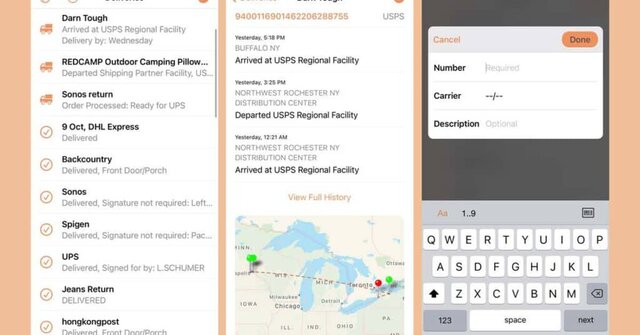
In order to minimize transport movements, the package must be received by the customer. By clearly communicating with the customer and allowing the recipient to communicate with you about the shipment delivery chances of the parcel will increase. Customers are getting more accessible than ever by smartphone, make use of this.
Transport companies are offering customers more and more different delivery options that can change during transport. Packages can be picked up at a pickup point, delivered at work, or of course, at home.
“By maintaining short lines with the recipient of the shipment, the chance of delivery is increased and this contributes to fewer transport movements.”
It is wise for specific orders that the driver or planner contacts the customer about the exact delivery time. For example, when the customer orders white goods or has a decorative tiles load for the backyard. By communicating clearly with the customer, you as a sender and the customer as a receiver know where you stand. Clear communication about a package’s shipment can also be done on a web page where frequently asked questions get answered.
Check logistical optimization software
Why sustainable packaging?
- Ecologically sound
- Save on packaging costs.
- Better for your corporate image
- Conservation of natural resources
- Sustainable packaging can be recycled completely and with ease
- The production of eco-friendly packaging is less harmful to the environment.
Why is a sustainable lifestyle important?
Nature cannot digest plastics because this material is not biodegradable. Therefore, it is more sustainable to use natural biodegradable resources because not everything we consume is collected and recycled.
The three arrows of the recycling symbol represent the three main stages of the recycling process: recycling, reuse, and prevention. Together the three arrows form a closed loop. Step Up and start your sustainable lifestyle today.
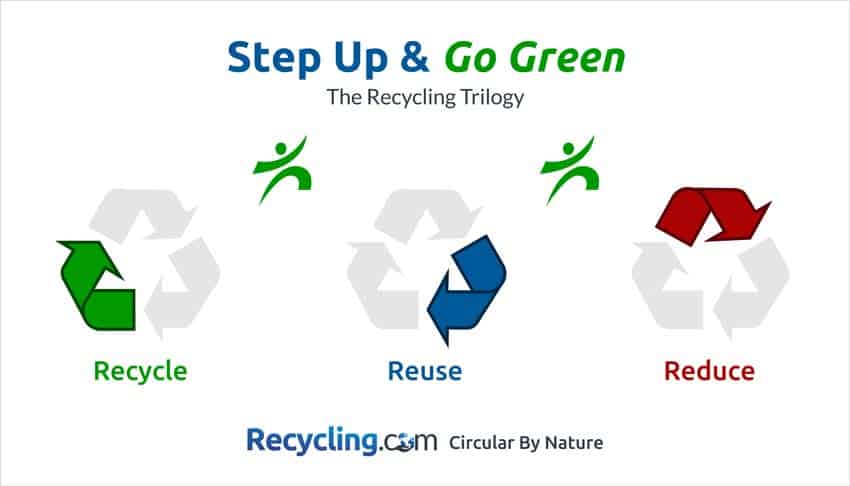
Sources
Epa. (2021). Facts and Figures about Materials, Waste and Recycling. Retrieved February 19, 2021, from epa.gov
NYU Stern. (2020). Sustainable Market Share Index™. Retrieved February 19, 2021, from stern.nyu.edu
Ortec. (2021). Packing and Load Optimization. Retrieved February 19, 2021, from ortec.com
Paazl. (2021). e-commerce returns in Europe everything you need to know. Retrieved February 19, 2021, from paazl.com
Triviumpackaging. (2020). 2020 buying green report. Retrieved February 19, 2021, from triviumpackaging.com
Vpkgroup. (2021). Facilitate your e-commerce product returns. Retrieved February 19, 2021, from vpkgroup.com
Molenveld, K., Van den Oever, M. J. A., & Bos, H. L. (2015). Biobased packaging catalogue. Wageningen UR-Food & Biobased Research.
Hidayatno, A., Destyanto, A. R., & Fadhil, M. (2019). Model conceptualization on E-Commerce growth impact to emissions generated from urban logistics transportation: A case study of Jakarta. Energy Procedia, 156, 144-148.
By Recycling.com/ 24 February 2021